I have defined a Many to Many relationship between 2 objects. Each object exposes the same Navigation property in order for me to traverse the relationships by code. The setup is as follows;
public class Message : Entity<int>
{
public int UserId { get; set; }
public User User { get; set; }
public Guid Reference { get; set; } = Guid.NewGuid();
public virtual ICollection<MessageGroup> MessageGroups { get; set; } = new HashSet<MessageGroup>();
}
}
public class Group : Entity<int>
{
public int UserId { get; set; }
public User User { get; set; }
public Guid Reference { get; set; } = Guid.NewGuid();
public virtual ICollection<MessageGroup> MessageGroups { get; set; } = new HashSet<MessageGroup>();
}
public class MessageGroup
{
public int MessageId { get; set; }
public Message Message { get; set; }
public int GroupId { get; set; }
public Group Group { get; set; }
}
and this in my Context;
protected override void OnModelCreating(DbModelBuilder modelBuilder)
{
modelBuilder.Entity<MessageGroup>()
.HasKey(bc => new { bc.GroupId, bc.MessageId });
modelBuilder.Entity<MessageGroup>()
.HasRequired(bc => bc.Group)
.WithMany(b => b.MessageGroups)
.HasForeignKey(bc => bc.GroupId)
.WillCascadeOnDelete(false);
modelBuilder.Entity<MessageGroup>()
.HasRequired(bc => bc.Message)
.WithMany(c => c.MessageGroups)
.HasForeignKey(bc => bc.MessageId)
.WillCascadeOnDelete(false);
}
However, when I attempt to load a Message that has multiple groups (records are correct in MessageGroup table), only the Messages are shown. For Information, I am loading these through the Messages DbSet. When I then load the Group through the Groups DbSet, the reverse happens, and only the Groups are shown.
Loaded from Messages DbSet;
Loaded from Group DbSet;
I can get both by using the MessageGroup DbSet and Including them;
var messageGroups = context.MessageGroups.Where(x => x.MessageId == id).Include(x => x.Group).Include(x => x.Message).ToList();
but I want to be able to load my Message or Group and have these available.
For information, my context is wrapped around another layer and I have exposed a few methods for each Type but ultimately, I am calling;
public T Get(U id)
{
return _dbSet.Find(id);
}

